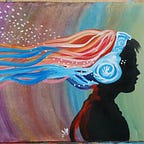The Enduring Allure of Aladdin
The tale of Aladdin is one that has captured the imaginations of people all over the world for centuries. It is a story of adventure, magic, and love that has been retold countless times in various forms, from the original text of “The Arabian Nights” to the popular Disney animated movie. However, what many people do not know is that behind the iconic characters lies a world of real stories influenced by cultural exchanges and the power of storytelling.
The origins of “Aladdin” can be traced back to the 18th-century French translation of “The Arabian Nights” by Antoine Galland. The original text of “The Arabian Nights” consisted of tales from Middle Eastern, South Asian, and North African traditions, and it was not until Galland’s inclusion of “Aladdin” that the tale became widely known in the Western world. Galland himself heard the story from a Syrian storyteller, Hanna Diyab, who claimed it was a popular tale from his homeland. This suggests that “Aladdin” may have been influenced by Middle Eastern traditions, but its true origins remain uncertain.
Nevertheless, the story of Aladdin has become a timeless classic, with its themes of greed, power, and the importance of wit and cunning over strength and wealth. At the heart of the tale is the titular character, Aladdin, a young and impoverished boy who lives on the streets of a bustling city. He is known for his quick wit and cleverness, which often help him outsmart his enemies and survive in a harsh world.
But who was the real Aladdin? Some believe that he was based on a real-life figure, a young man from the city of Baghdad who lived during the Abbasid Caliphate, a golden age of Islamic civilization. This theory is supported by the fact that the original text of “The Arabian Nights” was set in Baghdad and featured characters and places that were familiar to the people of that time. It is also believed that the character of Aladdin may have been inspired by the real-life adventures of the adventurer and traveller Ibn Battuta, who was known for his wit and cunning in navigating the treacherous roads of the Middle East.
The iconic character of the Genie is also based on a real figure from Middle Eastern folklore — the jinn. In Islamic mythology, jinns are supernatural beings made of smokeless fire who have free will and can possess magical powers. They are often depicted as mischievous creatures who have the ability to grant wishes to humans but at a great cost. The Genie in “Aladdin” is a powerful, larger-than-life character who grants Aladdin three wishes in exchange for his freedom. However, the original jinns from Islamic mythology were not bound by lamps or bottles, and they were not always benevolent. This raises the question of whether the Genie in “Aladdin” was simply a creation of the storyteller’s imagination or a portrayal of the jinn from Middle Eastern folklore.
However, perhaps the most well-known character in “Aladdin” is Princess Jasmine, the strong and independent daughter of the Sultan, who dreams of marrying for love instead of being forced into an arranged marriage. The character of Jasmine has been praised for being a positive representation of women in popular culture, but her story also reflects the realities of women’s lives in the Middle East during the time of the Abbasid Caliphate. Women during this period were often confined to their homes and had limited rights, and their marriages were arranged for political and economic gain rather than love. Jasmine’s character is a reminder of the struggles and desires of women in that era, and her determination to marry for love is a reflection of the changing attitudes towards women’s rights in the modern world.
The story of “Aladdin” is not just a fanciful fairy tale but a reflection of the cultural exchanges and influences that have shaped storytelling traditions around the world. From its origins in the Middle East to its widespread popularity in the Western world, “Aladdin” is a testament to the enduring power of storytelling and its ability to transcend cultural barriers and capture the hearts and minds of people from all walks of life.
In conclusion, the real stories behind the iconic characters of “Aladdin” may never be fully known, but what is certain is that they are a product of cross-cultural influences and the universal themes of human nature. From the streets of Baghdad to the screens of movie theatres, the tale of Aladdin continues to inspire and enchant audiences, proving that the power of storytelling knows no bounds.
